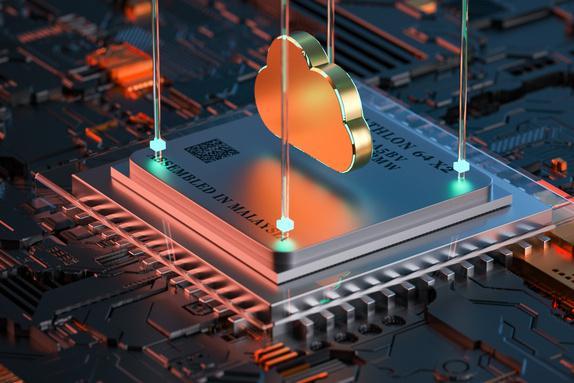AC/DC Converter Control Chips: Technical Principles and Chip Solutions
In modern electronic devices, power management is an essential technology. AC/DC converter control chips, as the core components of power converters, play a vital role in converting alternating current (AC) to direct current (DC). This conversion process is crucial for ensuring the stable operation of electronic devices, especially those that rely solely on DC power, such as smartphones, laptops, and various energy storage systems.
Introduction to AC/DC Converter Control Chips
AC/DC converter control chips are integrated circuits designed to convert the common AC power supply from homes or industries into the DC power required by electronic devices. This conversion involves multiple technical steps, including rectification, filtering, voltage regulation, and protection mechanisms. Rectification is the first step in converting AC to DC, typically achieved using a rectifier bridge composed of four diodes. This bridge converts both the positive and negative half-cycles of AC into unidirectional DC. However, the resulting DC still contains significant ripples, which need to be filtered through capacitors to eliminate high-frequency noise and produce a smoother DC output. Even after filtering, the voltage of the DC may still fluctuate, so voltage regulators are used to stabilize it at a constant level.
Moreover, AC/DC converter control chips integrate various protection mechanisms, such as overcurrent, overvoltage, short-circuit, and overtemperature protection, to ensure the safety of the power output. These mechanisms can quickly respond to abnormal conditions in the power supply, preventing device damage or safety incidents.
Principles and Importance
The working principle of AC/DC converter control chips is based on the high-frequency switching operation of semiconductor switching elements, such as MOSFETs. By controlling the on and off times of these switching elements, the chips convert AC to DC and smooth the output voltage through inductors and capacitors, resulting in a stable DC output. The voltage-second balance law of inductors is critical in ensuring the stable operation of switch-mode power supplies.
The significance of AC/DC converter control chips in energy storage systems cannot be overstated. They directly impact the overall performance, reliability, and cost-effectiveness of energy storage systems and are one of the core technologies driving the development and practical value of these systems. Optimizing the design and performance of AC/DC converter control chips can significantly enhance the energy conversion efficiency, system stability, and functional expandability of energy storage systems.
Popular AC/DC Converter Control Chip Solutions
According to the latest statistics and forecasts from APO, the global AC/DC chip  market reached $31.184 billion in 2022 and is expected to double to $63.749 billion by 2029, with a compound annual growth rate of 8.94%. This rapid market growth and vast potential have attracted the attention of many companies. Currently, numerous AC/DC converter control chips suitable for various applications have emerged in the market. These chips, known for their high efficiency and compatibility, are becoming a key force in driving different electronic technology fields, especially the development of energy storage technologies.
market reached $31.184 billion in 2022 and is expected to double to $63.749 billion by 2029, with a compound annual growth rate of 8.94%. This rapid market growth and vast potential have attracted the attention of many companies. Currently, numerous AC/DC converter control chips suitable for various applications have emerged in the market. These chips, known for their high efficiency and compatibility, are becoming a key force in driving different electronic technology fields, especially the development of energy storage technologies.
1. Rohm's BM2Pxxx/BM2PxxxF Series: These chips feature low on-resistance super junction MOSFETs developed in-house. The optimized circuit design delivers excellent efficiency and low noise performance. Products below the 8W level also offer an additional SOP-8 surface-mount package, saving installation space and making them suitable for energy storage systems.
2. Infineon's CoolSET™ Series: Utilizing fixed-frequency and quasi-resonant switching schemes, these chips integrate the latest 700V and 800V CoolMOS™ P7 super junction MOSFETs. They are suitable for TV power supplies, computer power supplies, general-purpose power supplies, and fast chargers.
3. STMicroelectronics' ST-ONE Series: Designed specifically for smart grids and energy storage applications, these highly integrated chips offer functions such as power factor correction and isolated gate drivers, achieving ultra-high work efficiency and compact design.
4. Nexperia's NEX806/8xx and NEX8180x Series: Tailored for GaN-based flyback converters, these chips are suitable for high-power-density applications such as PD fast chargers, adapters, and industrial power supplies. The NEX806xx/NEX808xx are quasi-resonant/multi-mode flyback controllers that can operate over a wide VCC range, while the NEX81801/NEX81802 are adaptive synchronous rectification controllers.
5. Infypower's BEG75050: A bidirectional AC/DC conversion module designed for V2G and energy storage charging applications, it features a wide constant-power voltage range and high efficiency.
6. Meraki 's MK2697G: A high-frequency QR AC-DC PWM control chip, it uses an ultra-small SOT23-6 package, supports 9—90V Vcc power supply, and eliminates the need for external voltage regulation circuits, reducing board space.
7. Dongke Semiconductor's DK065G: An integrated 650V/260mΩ GaN HEMT quasi-resonant flyback control AC-DC power switch chip, it simplifies the design and manufacturing of flyback AC-DC converters.
8. Chipown's PN8161: A PWM control chip with an integrated quasi-resonant current mode controller and power MOSFET, it is designed for high-performance, component-saving AC-DC switch-mode power supplies and features comprehensive intelligent protection functions.
Conclusion
As the core component of power conversion, AC/DC converter control chips play a crucial role in modern electronic devices. They not only convert AC to DC but also ensure the safety of power output through integrated protection mechanisms. With the rapid development of renewable energy and continuous progress in power electronics technology, the application fields of AC/DC converter control chips will become even broader. Their role in improving energy efficiency, enhancing system stability, and expanding system functionality will become increasingly prominent.
Website: www.conevoelec.com
Email: info@conevoelec.com








